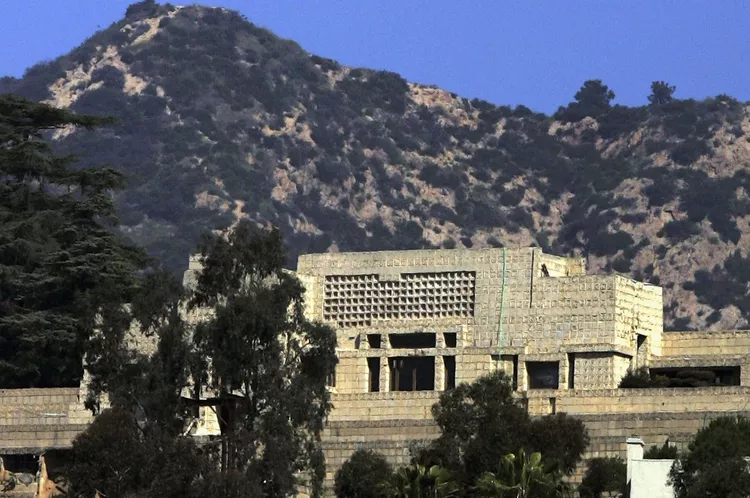Summary
Explore Frank Lloyd Wright’s Architectural Masterpieces in California
If you are a fan of architect Frank Lloyd Wright or of great architecture in general, his California creations can serve as the focus of some exhilarating day trips. Head to one or all of his designs scattered throughout California, from northern California to Los Angeles, including lesser-known properties like shopping centers and medical clinics.
Originally from Wisconsin, Frank Lloyd Wright lived most of his early life in the Midwest, yet he harbored visions of bringing his work westward to California. Consequently, he left his distinctive mark across the California landscape. His first California design was the George C. Stewart House, a Montecito house near Santa Barbara built in 1909. His last California construction was the Pilgrim Congregational Church in Redding, California, completed in 1957.
Most of his designs exhibit a common trait: they appear organic, as if they sprung from the nature surrounding them. In total, 26 buildings designed by Frank Lloyd Wright in California are still standing. Remarkably, only two have been lost: Residence B at Hollyhock House and Wright’s Harper Avenue Studio in Los Angeles.
The American Institute of Architects has designated 17 of Wright’s designs as most representative of his contribution to American culture, with three located in California: Hollyhock House (1917) in Los Angeles, the V.C. Morris Gift Shop in San Francisco, and the Hanna House in Palo Alto. While many of his California designs were residential, he also created a shopping center, a church, and civic centers.
01: Los Angeles-Area Buildings

During a day trip, consider visiting eight notable Frank Lloyd Wright constructions in the Los Angeles area. While he is best known for his prairie-style homes, he popularized other styles as well. In LA, you can explore his famous textile-block houses, of which he designed only four in 1923. These include the Ennis House, Storer House, Millard House/La Miniatura, and the Freeman House.
From Taliesin West, Wright’s winter home, he developed another style known as desert rubble construction. This method employs rough stones and concrete shaped with a wooden form. Just outside LA, in Malibu, he created the Arch Oboler Gatehouse (1940) using this style.
Additionally, he designed the George D. Sturges House in Brentwood in 1939, recognized as the only true example of a Usonian-style house in southern California, primarily used in northern California. The Wilbur C. Pearce House, constructed in 1950 in the San Gabriel Mountains, evokes a Usonian feel.
02: San Francisco-Area Buildings

One enjoyable way to explore San Francisco is by creating your own Frank Lloyd Wright scavenger hunt. Begin with the V.C. Morris Gift Shop, built in 1948 in Union Square. Its circular design served as an early prototype for New York’s Guggenheim Museum.
Wright often utilized the Usonian style of architecture in the San Francisco area, which was his term for American architecture, representing middle-income families. These small, single-story houses frequently featured an indoor-outdoor connection and were typically built in an “L” shape. Noteworthy examples include the hexagonal Hanna House (1936), Sydney Bazett House (1939), and Buehler House (1948), along with the Arthur C. Mathews House (1950).
Additionally, the desert rubble-style construction appears in the Berger House (1950) located in the Bay Area’s San Anselmo.
03: Buildings in Other Parts of California

A number of Frank Lloyd Wright constructions can be found outside of LA and San Francisco. For instance, you can find a remarkable example of desert rubble-style construction in the Pilgrim Congregational Church in Redding, California, located about 150 miles north of Sacramento.
Other notable Usonian structures in California’s Central Valley include the Randall Fawcett House (1955), Kundert Medical Clinic in San Luis Obispo (1955), Robert G. Walton House (1957), and the Dr. George Ablin House in Bakersfield (1958).
The only clubhouse designed by Frank Lloyd Wright in 1923 was initially left as blueprint and concept only. However, in 2001, Wright’s vision was brought to fruition when it was constructed posthumously as the Nakoma Resort in the North Lake Tahoe region of California.
04: Open for Tours

Only a select few of Frank Lloyd Wright’s buildings are open to the general public and even these sometimes require maintenance and renovations. Therefore, check with each location prior to planning a visit.
- Marin Civic Center (1955) offers a docent-led tour of this extensive government complex once a month or you can embark on a self-guided tour.
- Hanna House is open for tours a few days a month.
- Hollyhock House has reopened following extensive renovations, though restoration of other buildings on the property are still in progress.
- Ennis House, sold to a private owner in 2011, is required to be open to the public 12 days a year. However, tours may be suspended due to necessary foundation restoration following the 1994 Northridge earthquake and subsequent heavy rains.
- Mrs. Clinton Walker House in Carmel is open one day a year as part of a charity event (1948).
- Anderton Court Shops in Beverly Hills (1952).
- Kundert Medical Clinic in San Luis Obispo.
- Pilgrim Congregational Church in Redding, California, approximately a two-and-a-half-hour drive from Sacramento.





